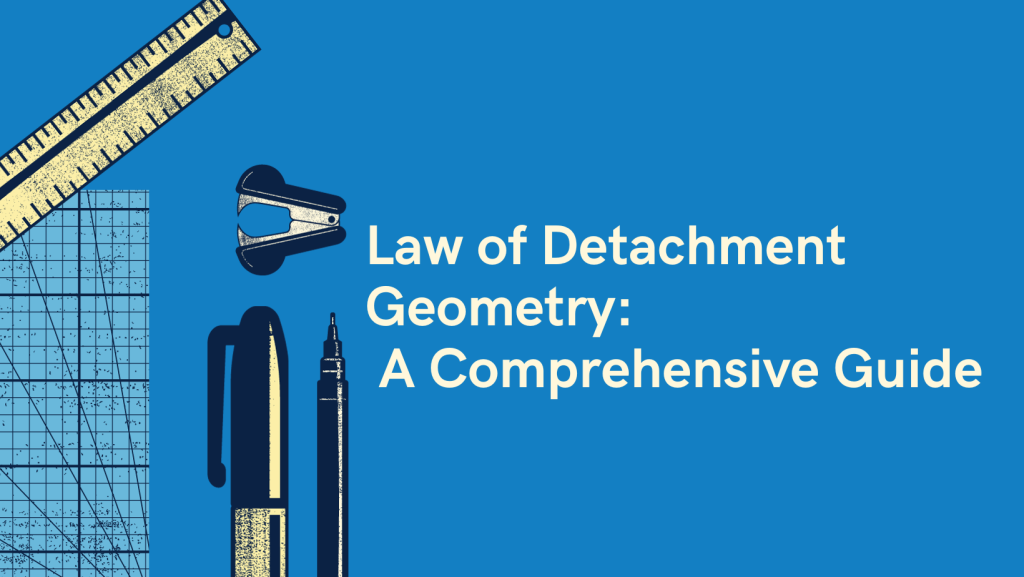
The law of detachment geometry stipulates that if a conditional statement is true and its antecedent is true, the consequence must also be true. From this law, you can note that the antecedent comes after the word “if” in the conditional statement. The consequence comes right after the word “then.” There is much more to geometry; you require supplementary alternatives to acquire enough knowledge. Our Maths Assignment experts created this article to unravel some secrets of the law of detachment geometry and give examples to help you solidify your understanding of this concept. They also help students with their geometry assignments, projects, and exams.
What is the Law of Detachment?
Have you ever tried understanding how mathematicians make logical decisions from particular statements? This is the foundation place where the law of detachment geometry becomes relevant. The law of detachment allows mathematicians to establish valid conclusions based on-premises or statements.
When applying mathematical logic, the law of detachment utilizes the following equation:
If P → Q is true and P is true, then Q is true.
Real-Life Examples of the Law of Detachment Geometry
Example 1: Driving a Car
You are driving down the street and see another vehicle with its turn signal on. Applying your understanding of traffic rules, you safely conclude the driver intends to make a turn at the next intersection. In this situation, you are using the law of detachment.
The law of detachment states that if there is a conditional statement, “if p then q,” and knows p is true, one can conclude that q must also be true. Applying this concept to the example, the knowledge that when someone turns on their turn signal, they intend to make a turn (p). Upon seeing a car with its turn signal on (q), the conclusion is that the driver wants to make a turn at the next intersection.
Example 2: Rain
The conditional statement states, “If it rains, the ground will become wet.” When you look outside and find it raining (P is true), based on the law of detachment. Accordingly, you can confidently conclude that the ground will be wet, meaning (Q is true). The conclusion is valid following the understanding and application of the law of detachment.
Example 3: Parallel Lines
The law of detachment is also applicable in geometry. For example, assume you have two parallel lines intersected by another line. When one measures and finds that alternate interior angles are congruent, the verdict is that those two lines are parallel.
Most algebraic expressions follow a similar law. For an equation that states, “If X + 5 = 12, then X = 7.” In this equation, one has applied the detachment principle to conclude that X equals 7 using the available evidence.
Example 4: Triangles
Triangles is another way to illustrate the law of detachment geometry. Assume there are two sides of a triangle that are congruent or have specific lengths. For example, side AB = side BC and side BC = side DE. In this case, the conclusion is that triangle ABC is congruent to triangle CDE after applying the Side-Side-Side (SSS) criterion.
Example 5: Rain and Umbrella
Assume that the following statement is true:
If it rains, then I will bring an umbrella. Now, assume separately that the following two statements are also true. What is the likely conclusion you will make?
- It is raining.
- I will bring an umbrella.
This is how you should solve this question:
First, consider situation A. Since the antecedent of the true conditional statement is true, the consequence must be true as well. Accordingly, statements A and B are enough to conclude I will bring an umbrella.
Second, the statements “if it rains, then I will bring an umbrella” and “I will bring an umbrella” are both true. For this scenario, both the statement and its consequence are true. However, there is still insufficient information to conclude it is raining. Accordingly, there is no viable conclusion to make through this statement alone.
Still Stuck? Get Help with the Law of Detachment Geometry
The Law of Detachment Geometry empowers us to make logical conclusions in mathematics and real-life scenarios. As seen from the examples, it’s a powerful tool for problem-solving. Don’t hesitate to seek assistance if you struggle with geometric proofs or algebraic equations. Reach out to our math experts for timely and affordable help. Take the first step toward a deeper understanding of geometry and algebra – reach out to us now and unlock your potential.




